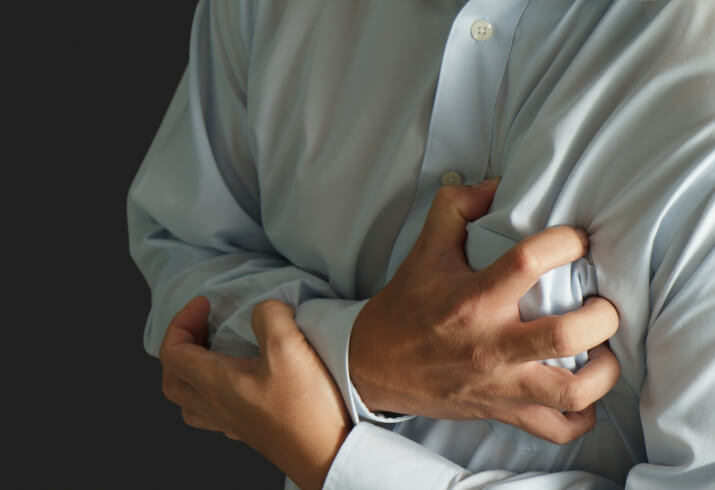
Warning Signs: How to Recognize Symptoms of a Heart Attack
Did you know that around every 34 seconds someone in the United States has a heart attack? In order to survive, your heart muscle must have a continuous supply of oxygen. A heart attack will occur when the blood flow that’s responsible for providing that oxygen is severely reduced or cut off completely (usually when coronary arteries become narrow and/or blocked over time).
Knowing the Signs
While some heart attacks come on suddenly and are intense to experience, most start slowly and only produce mild pain or discomfort that is easy to overlook. However, catching a heart attack early is critical and can mean the difference between life and death, so it’s important to be aware of common symptoms. Here are some of the main signs that can indicate you or a loved one is experiencing a heart attack.
- Discomfort in the area of the chest: Most heart attacks will involve some sort of discomfort that’s centered in the middle or on the left side of the chest. It can either last for a few minutes or go away and come back repeatedly. Many patients describe this as an uncomfortable pressure or squeezing in the chest area. Other say it feels like an uncomfortable fullness in the area, whereas still others report only feeling pain. Heart-attack-related chest pain has also been compared to heartburn or indigestion.
- Discomfort in other areas of the upper body: In addition to chest discomfort, you may also feel pain or distress in other areas of the body. Discomfort is commonly felt in one or both arms, as well in the back, neck, and/or jaw.
- Shortness of breath: If you find that you are having difficulty catching your breath, this can be an early sign of a heart attack. This shortness of breath can occur with or without chest discomfort, and can occur when you are resting or engaging in minimal physical activity.
- Lightheadedness, dizziness, and unexplained sweating: Some heart attack victims report feeling dizzy or like they are going to pass out. Breaking out in an unexplained cold sweat can also be a sign you are having a heart attack, as can cold, clammy skin.
- Stomach pain, and/or nausea and vomiting: Sometimes stomach discomfort or pain will accompany other heart attack symptoms. Note that the pain is commonly felt in the upper part of the stomach, above the belly button. Some patients will feel nauseous or sick to the stomach, and some will even vomit as a result.
Symptoms in Men vs. Women
In both men and women, the most common heart attack symptom across the board is chest pain and/or discomfort. However, women are more likely than men to experience other common symptoms, including shortness of breath, nausea and vomiting, and back or jaw pain.
If you are experiencing something but are unsure whether it’s a heart attack or not, call 9-1-1 anyway or at the very least speak with your doctor. With heart attacks, every minute matters, and fast action can not only save your life but also minimize any damage to your heart.